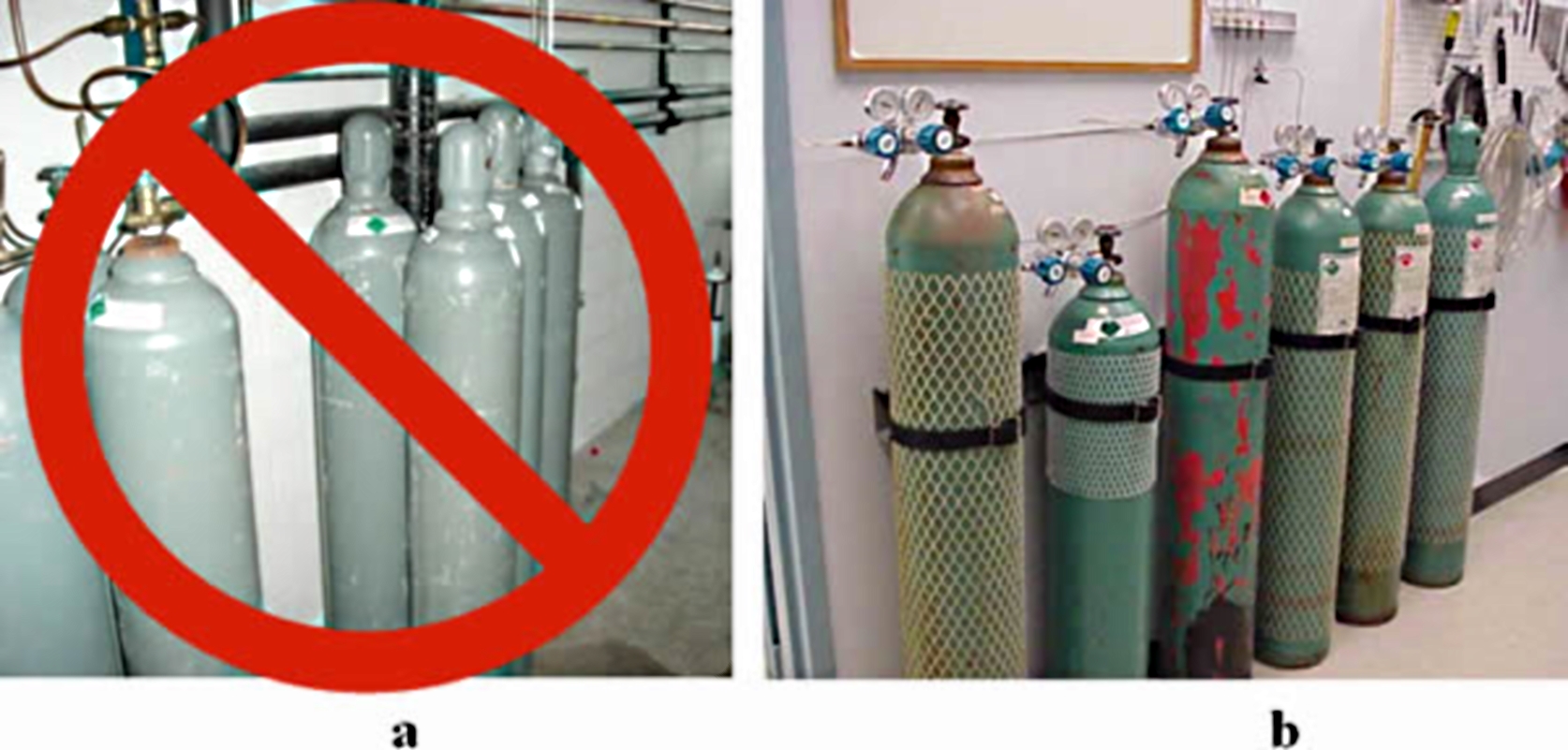Compressed Gas Use

Currently there are more than 200 different substances commonly shipped in compressed gas containers, which can be considered compressed gases.
Compressed gases can be classified or categorized in a variety of ways and are often based on a common source, similar use, related chemical structure or similar physical properties. Many gases can fall into multiple categories. Generally, the term "compressed gas" also refers to liquefied and dissolved gases meeting these criteria and also include cryogenic gases, e.g. Nitrogen (N2), Hydrogen (H2) and Helium (He).
Multiple hazards may be associated with compressed gases including:
- Fire and explosion hazards due to some flammable, pyrophoric or reactive gases.
- Health hazards due to some toxic, corrosive or asphyxiant gases.
- Pressure hazards due to high pressure (inherent to) within most cylinders that can result in a rapid release of pressure and subsequent violent pinwheeling or (propulsion) rocketing of the cylinder.
Each laboratory must develop Standard Operating Procedures (SOPs) that cover the hazards associated with the compressed gas as well as precautions, PPE requirements, etc. There are also limitations on the number and volume of cylinders as well as additional requirements that may apply depends on the specific use and type of materials involved.
